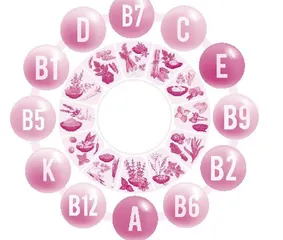Why Are Vitamins Named after Letters?维生素为什么要以字母命名?

We all know that vitamins are essential for our health, but how did they get their names and when were they found in the first place?
我们都知道维生素对健康至关重要,但它们的名字是怎么得来的?它们是什么时候被发现的?
Though humans have always understood there’s a connection between diet and health, it took thousands of years for modern nutrition research to emerge. Then in 1838, Dutch chemist Gerardus Johannis Mulder proposed the existence of a compound he called protein, which he argued played a “principal role” in nourishment. For decades, protein was considered the “true nutrient” for human health, despite emerging knowledge that fruit, vegetables, and milk eased conditions such as scurvy and rickets.
尽管人类一直都知道饮食与健康之间存在联系,但现代营养学研究却在几千年之后才出现。1838年,荷兰化学家格哈杜斯·约翰尼斯·穆尔德提出存在一种化合物,并称之为“蛋白质”,他认为蛋白质在营养物质中占“主要地位”。几十年来,蛋白质被认为是让人类保持健康的“真正营养物质”,尽管人们逐渐认识到水果、蔬菜和牛奶可以缓解坏血病和佝偻病等疾病。
Polish chemist Casimir Funk theorized in 1912: the person with beriberi was a lack of another substance, a nitrogen-containing compound he called vitamine, a combination of the Latin word for “life” and “amine”, the name for a compound that contains nitrogen.
波兰化学家卡西米尔·冯克在1912年提出,患有脚气的人缺乏的是另一种物质,一种含氮化合物,他称之为“维生素”,这是由拉丁语中“生命”和“胺(含氮化合物)”组合而来。
Around the time Funk found a compound he called vitamine, American nutrition scientist Elmer McCollum conducted feed experiments with different animal populations and discovered that an “accessory” substance present in some fats was essential to rat growth. That fat-soluble substance became known as vitamin A. McCollum and others also conducted further experiments with Funk’s rice bran—isolated nutrient, naming it vitamin B after beriberi. Eventually, it turned out that the substance was actually eight water-soluble vitamins.
就在冯克发现了一种他称之为“vitamine”的化合物的时候,美国营养学家埃尔默·麦科勒姆对不同的动物进行了饲养实验,发现一些脂肪中存在的一种“辅助”物质对老鼠的生长至关重要,这种脂溶性物质被称为“维生素A”。麦科勒姆等人还对冯克的米糠提取营养物质进行了进一步实验,并根据脚气病的名称将其命名为“维生素B”。最终发现,这种物质实际上是八种水溶性维生素。
The e in vitamine was dropped after scientists recognized that not all the compounds were nitrogen-containing amines. But the custom of naming vitamins alphabetically in order of discovery continued. Today four fat-soluble vitamins—A, D, E, and K—are considered essential to human growth and health. So too are nine water-soluble vitamins: B1 (thiamine), B2 (riboflavin), B3 (niacin), B5 (pantothenic acid), B6 (pyridoxine), B7 (biotin), B9 (folate), B12 (cobalamin), and C.
在科学家认识到并非所有化合物都是含氮胺后,vitamine中的e便被去掉了。但按发现顺序用字母顺序为维生素命名的习惯保持了下来。现在有四种脂溶性维生素:维生素A、维生素D、维生素E和维生素K,被认为对人类的生长发育和健康至关重要。同样重要的还有九种水溶性维生素,包括维生素B1(硫胺)、维生素B2(核黄素)、维生素B3(烟酸)、维生素B5(泛酸)、维生素B6(吡哆醇)、维生素B7(生物素)、维生素B9(叶酸)、维生素B12(钴胺素)和 维生素C。
Vitamin K was an exception. Given its discovery date in 1929 by Danish researcher Henrik Dam, vitamin K most likely would have been labeled with an earlier letter, such as F. But Dam’s research revealed that the substance was essential for blood coagulation—a word that starts with k in Scandinavian languages and German—and he proposed the new name instead.
维生素K是一个例外。维生素K是由丹麦研究员亨利克·达姆在1929年发现的,因此它很可能就被冠以K之前的字母,例如 F。但达姆的研究发现,这种物质对血液凝固至关重要(在斯堪的纳维亚语和德语中,“凝固”一词以字母k开头),因此他提出用字母K命名。
The last essential vitamin, B12, was discovered in 1948. Since then, researchers have focused on the health benefits of vitamins, learning more about the links between deficiencies and disease and using the substances to treat conditions such as pellagra and anemia.
最近一种人体必需的维生素B12发现于1948年。自那时起,研究人员一直致力于研究维生素对人体健康的益处,进一步了解缺乏维生素与疾病之间的联系,并利用这些维生素来治疗糙皮病和贫血等疾病。
Word Bank
propose /prə'pəʊz/ v. 提出(解释)
compound /'kɒmpaʊnd/ n. 化合物;复合物
substance /'sʌbstəns/ n. 物质
deficiency /dɪ'fɪʃnsi/ n. 缺乏;缺陷